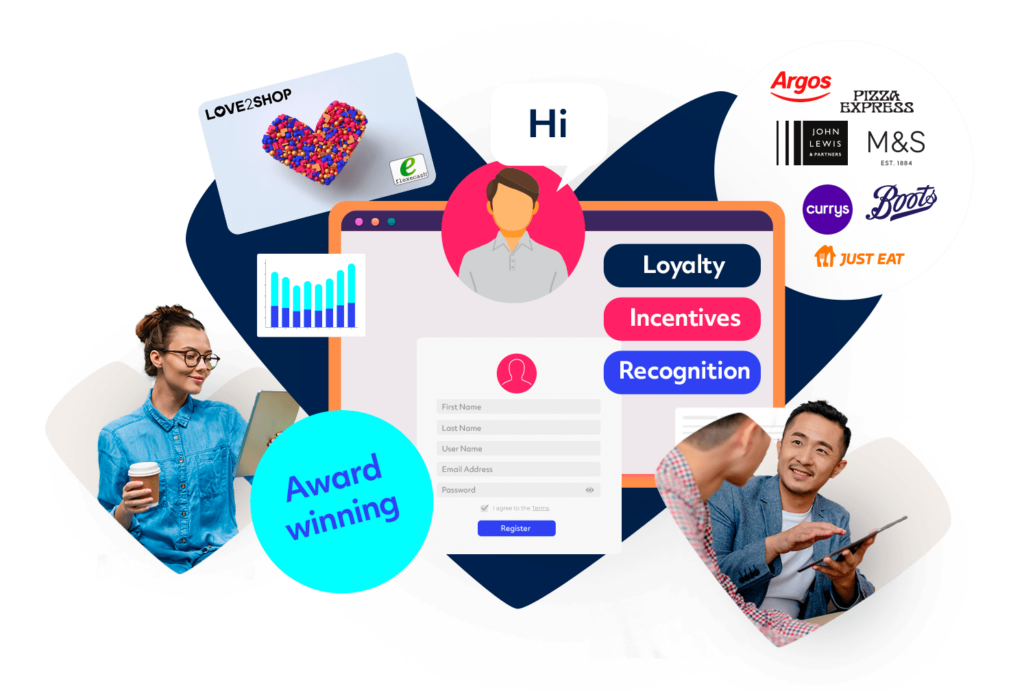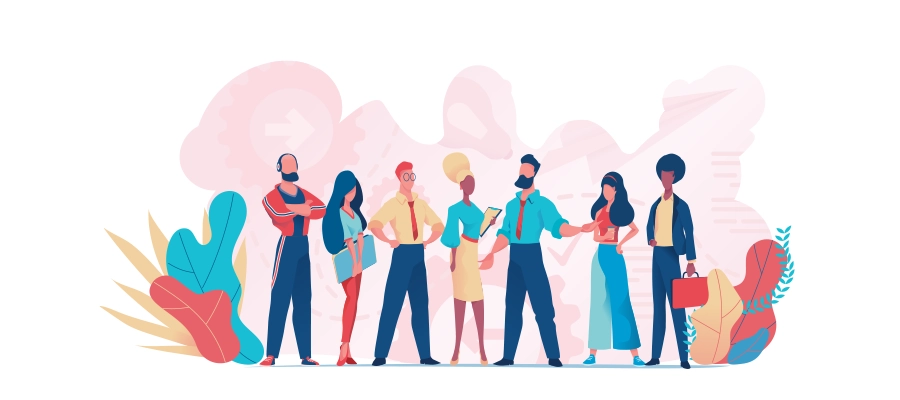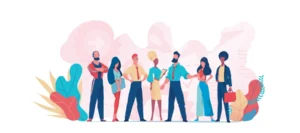In today’s working climate, diversity has become a hot topic
of conversation. It’s important for
organisations to recognise, as without diversity and equality in the workplace,
employers are at risk of missing out on the value it provides. Diverse
workplaces are happier, colleagues are more productive, and have an edge in an
increasingly competitive environment.
Diversity: what does inclusion mean?
Diversity is the practice of making people from varied social, ethnic, neurodivergent, gender, and sexual orientation backgrounds feel included. The term encompasses a large range of social issues, all of which tie together to create unique life experiences.
Inclusion goes hand in hand with diversity. It means everyone, no matter their walk of life, should have equal opportunities to institutions such education, workplaces, and further resources.
In essence, diversity and inclusion in the workplace is all about hosting conversations about implicit bias. This refers to attitudes, prejudices, and judgement that we unconsciously hold about people or groups. Such feelings are ones ingrained in our subconscious, and as such, we’re unaware of these feelings due to us being unable to pinpoint where they come from.
Four types of diversity in the workplace
There are several characteristics that represent diversity.
Some of them are visible, whereas others are not. Another point is that many of
these traits are part of us, unable to be change, while the rest can evolve as
we develop as people.
Four types of diversity are recognised, including internal,
external, organisation, and worldview.
·
Internal:
this references any trait or characteristic someone is born with, such as
sex, gender, sexual orientation, race, ethnicity, nationality, and physical
ability. Such features are protected by the Universal Declaration of Human Rights.
·
External:
comprised of any attribute, experience, and circumstance that defines a
person’s identity; not something someone is born with. Examples include the
likes of socioeconomic status, level of education, marital status, religious
views, appearance, and location. As people grow and develop, these factors are
prone to change.
·
Organisational:
Job function, work experience, seniority, department, or management level
are known as organisational diversity; linking to differences in these fields.
·
Worldview:
the broadest type of diversity, worldview encompasses a vast range of
beliefs; political, cultural, and travel experiences. The varied perspectives
of the workforce helps contribute to an inclusive work environment, as
different influences mould the way we interpret the world.
What is equality and diversity in the workplace?
It’s vital for any organisation to develop ethnically diverse teams, as this is a very important factor of championing diversity in the workplace. However, focusing on one such characteristic can soon become tokenistic; leading to team members feeling isolated due to be identified on a superficial level.
To promote true diversity, leaders shouldn’t just hire people that fit the, oftentimes physical, description of marginalised groups. They need to consider, and ultimately, value differences we can’t see. This covers the likes of economic situation, immigration status, neurodiversity, and education.
The fundamental nature of diversity in the workplace is building a workforce of the different backgrounds mentioned in this article. Most importantly, this outlook fosters a sense of belonging, as this camaraderie goes a long way in making everyone, no matter their walk of life, feel like they’re part of the team.
Examples of diversity and inclusion in the workplace?
Homogeneity is defined as the state of being all of the same
kind. In turn, this is the basis of diversity in the workplace. Still, such a
quality can be interpreted in many different ways. It’s best to take a step
back, considering what diversity means to you. Think of it in a situation, how
you would utilise it. This is because we can underestimate the full of extent
of diversity. It’s easy to pigeonhole it, but majority of the time, we can find
ways to better the level of diversity on a team, in decision-making, planning,
and general conversation.
Here are a few examples of diversity in the workplace:
·
Cross-functional
teams: known as the first level of diversity, and mostly taken for granted
for workplaces, the core value of this point is if we look around to only see
one type of type role; that’s a problem. For the sake of diversity, a team
needs to contain expertise and representation from different areas to earn
greater understanding.
·
Racial
diversity: in racially diverse workplaces, there’s a greater chance of
ingenuity prevailing; as efficiency increases. In turn, this leads to a
stronger impact a company’s financial performance. This is due to alternate
perspectives, as a multitude of different experiences leads to capitalising on
variety.
·
Gender
diversity: similar to the previous point, gender diversity in the workplace
leads to more creativity. Ideas can be bounced off each other, leading to an
increased sense of innovation.
·
Socioeconomic
status: if everyone on a team comes from the same socioeconomic status, a
loss of perspective can occur. A lack of diversity ensures people from
different backgrounds are left out, and this can lead to customers feeling
alienated.
·
Educational
background: there can be no diversity if the majority of a team comes from
the same educational background. It’s no secret that schooling goes a long way
in sculpting a person’s beliefs, and when students learn about different ways
of life, it goes far in helping them to interact with different social groups.
·
Location
background: even if everyone comes from the same country, diversity is
still important. A team full of colleagues from different geographic areas
provides a wide range of different viewpoints, as upbringings alter on a person-by-person
basis.
The advantages of inclusion and diversity in the workplace
There are many advantages of diversity in the workplace. A diverse company is home to more innovation, engaged employees, and are able to drive more revenue. Diversity is crucial for creativity, as when organisations embrace its value, perspectives broaden. Better ideas are formed, assumptions are questioned, blind spots are pointed out, new approaches can be developed, and in turn better solutions are created.
Every point coincides with a surge of transformation, performance, and growth; all down to team leaders relying on diverse perspectives. According to research, companies that are both gender and ethnically diverse are much more likely to outperform competitors.
· Decrease in groupthink: a psychological phenomenon, a groupthink is when a person strives for consensus within a group; often setting aside their own beliefs in an effort to fit in. As such, the larger the group, the more likely someone is to avoid disagreeing, as well expressing doubt.
· Increased creativity levels: diverse workforces unite people with individual life experiences. This in turn leads to a vast amount of perspectives, which come together to solidify unique approaches. As a result, fresh ideas are generated.
· Skills and knowledge bank: one of the best things to come from diversity is the wide array of skillsets. Organisations can tap into this wealth of knowledge.
· Better decision making: decision making processes are made easier, as various viewpoints allow potential problems to be more easily resolved; alternate solutions are found. It also helps reduces the aforementioned point of groupthink.
· Problems are easier to solve: diverse perspectives are able to challenge assumptions, encourage critical thinking, and offer more robust solutions.
· Expanse in market research: customers vary just as much as a workforce. When teams embody the diversity of customers, their insights are more profound; capable of looking into different cultural preferences, needs, and expectations. This leads to products being improved, services being of a better quality, and the customer journey more straightforward.
· Higher engagement and retention: a sense of belonging is a key factor in ensuring employee retention rates remain high. To feel respected, as well as valued, it is vital that colleagues are engaged. Inclusivity boosts morale, driving retention rates up.
· Brand reputation: in an increasingly competitive market, an organisation’s reputation means everything. Stats show that 78% of companies highlighted diversity as the main driver of their image. Potential employees are drawn to the promise of inclusive work environments, and customers prefer patronising companies known to demonstrate a commitment to diversity and equality.
· Culturally competent: exposure to all manner of different cultures, their customs, perspectives, and even languages broaden a worker’s understanding of global markets; an extremely important consideration in an ever-interconnected world.
· Financial performance: Research has found in Europe, firms that have a large amount of women in senior positions have significantly higher financial performance; especially in sectors like tech.
Managing diversity in the workplace
Changing the culture of a workplace takes time and effort, but the payoff is more than worth it. Employers can shy away from making the first leap, not knowing where to start, or if they’re doing things right. In the past, if a business has failed launching a diversity scheme, there might be apprehensive to try again; especially if no benefits were seen. Still, there will always be a demand for equality and diversity in the workplace.
How you can promote diversity in your workplace
·
Hiring
practices: talents need to be sourced from all backgrounds. Ensuring
diversity in hiring practices is of vital importance, so we shouldn’t apply
barriers to application processes. This includes asking for advanced degrees,
certifications costing a lot of money, or super specific experience. It’s key
for organisations to commit to inclusive hiring, and this can be mentioned in
the job description. When conducting interviews, the panel of interviewers
should represent the diversity found in the workplace.
·
Employee championing:
employees are more than numbers on a spreadsheet. They’re people, bringing
their entire selves to work; it’s nigh impossible to separate work you from
home you. To ensure a workplace is inclusive, leaders can provide colleagues
with a space where they can gather with people of a similar background. This
helps them feel included and represented while at work.
·
Inclusive
leadership: leaders are the pillars of any organisation. If people from an
underrepresented background see someone, they can relate to in a senior
leadership position, it shows them their career can progress in the same way.
·
Being
transparent: there’s no point in trying to be covert when it comes to
building diversity. Be transparent, as a single person won’t be able to fix
things by themselves. Implementing regular meetings, where colleagues can offer
feedback, helps change move along at an agreeable pace. Follow up any concerns,
as communication is key in showing staff changes are being made.
·
Allyship:
it isn’t just a buzzword. Social justice issues impact so many people, and
organisations can use their platform to speak out. Take a stand against human
rights issues like racism, discrimination, sexism, prejudice in all its forms,
and harassment. Building a safe
environment for colleagues values their rights.
·
Vulnerability:
when groupthink occurs, it becomes difficult for employees to speak up for themselves
as they feel their dissenting opinions could potentially turn people against
them. Play devil’s advocate, sum up the pros and cons of any ideas presented in
group settings. This shows a team that you’re, and by extension the organisation,
is interested in the best idea; not the most popular one.
·
Research:
inclusivity builds trust within a business, so sharing the benefits of
diversity with you team is a must-do. Employees that feel happier, healthier
both physically and mentally, are more likely to stay longer, improving
productivity levels.
·
Long-term
diversity: diversity isn’t just a conversation. It’s a celebration of what
makes us all unique, as our upbringings, backgrounds, way of thinking, and
perspective of the world brings strength to the table.
·
Gift
cards: no matter an employee’s background, a gift card goes a long way in
recognising their hard work. Browse highstreetvouchers.com to
shop our range of gift cards and vouchers for businesses.
At highstreetvouchers.com, we are committed to aiding businesses such as yours in cultivating a motivated and content workforce. Commence the implementation of these recognition ideas today and observe the affirmative influence they exert on your employees and your organisation at large. Through investing in a employee engagement platform, you will be supporting the well-being of your employees and acknowledging their endeavours, you are establishing the bedrock for a more promising and triumphant future for your company. Here’s to successful recognition.
Love2shop Engagement Platform



